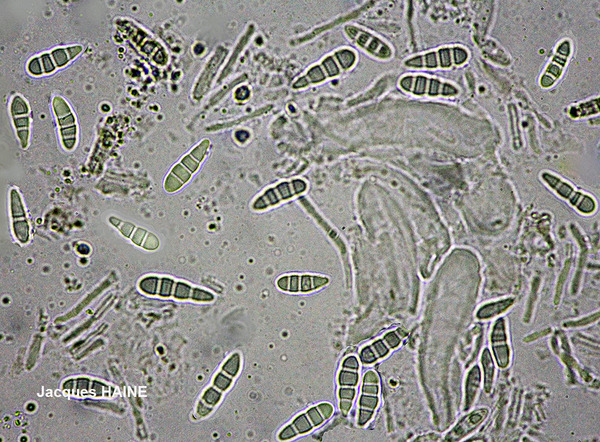Byssoloma maderense Breuss
Stapfia, 101: 47, 2014.
Synonyms:
Distribution:
Description: Thallus crustose, thinly episubstratic, greenish grey to greenish, continuous to rimose, not granulose nor farinose, forming orbicular, often confluent, 1-2(-3) cm wide patches, sometimes delimited by a dark prothalline line. Apothecia numerous, round, 0.25-0.6(-0.6) mm across, adnate or only slightly constricted at base, with a flat to slightly convex, brownish grey to black, irregularly pruinose disc surrounded by a thin but distinct and persistent, cottony-arachnoid, tomentose, white rim formed by loosely woven hyphae with abundant adhering colourless crystals not dissolving in K, visible only under polarized light. Proper exciple formed by loosely intricate hyphae, inspersed with crystals; epithecium colourless to pale brown, with a thin layer of colourless to brownish crystals; hymenium colourless, I+ blue; paraphyses simple or sparingly branched, c. 1.5 µm thick, the apical cells not swollen; hypothecium dark red-brown, K+ purple. Asci 8-spored, clavate, with a K/I+ blue apical dome containing a darker blue, tubular ring-structure, and an amyloid coat, Byssoloma-type. Ascospores 3-septate, not or slightly constricted at the septa, hyaline, subcylindrical, 10-15 x 3-4 µm. Spot tests: thallus K-, C-, KC-, P- or P+ orange red. Chemistry: without lichen substances.Note: a corticolous, more rarely foliicolous species described from Madeira, and presently known from the southeastern United States, the Atlantic Islands, the British Isles, Portugal, France, Georgia, and Russia (see Breuss 2016). The species has been frequently confused with B. leucoblepharum (Cannon & al. 2022), and its presence in Italy cannot be excluded.
Growth form: Crustose
Substrata: bark and leaves
Photobiont: green algae other than Trentepohlia
Reproductive strategy: mainly sexual
Most common in areas with a humid-warm climate (e.g. most of Tyrrenian Italy)
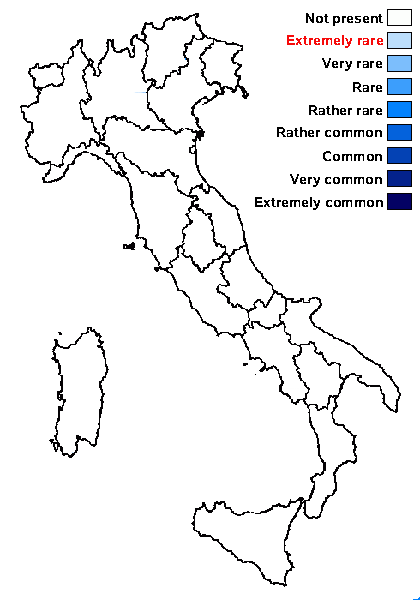
Predictive model
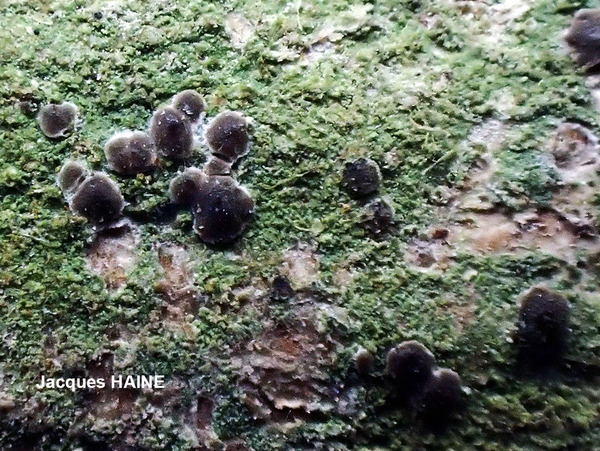
Jacques Haine - Source: http://www.lichensmaritimes.org/index.php?task=fiche&lichen=1330&lang=en
France, Crozon
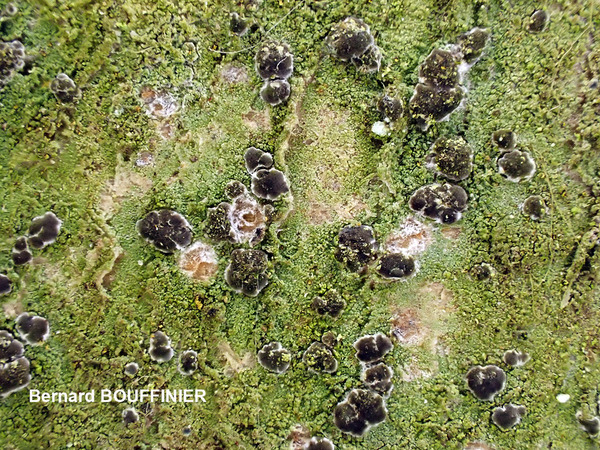
Bernard Bouffinier - Source: http://www.lichensmaritimes.org/index.php?task=fiche&lichen=1330&lang=en
France, Crozon
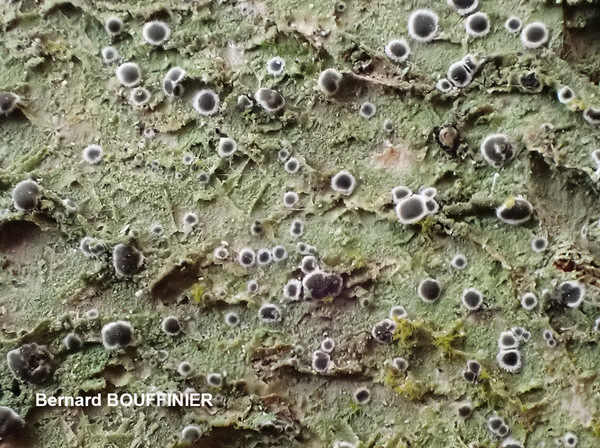
Bernard Bouffinier - Source: http://www.lichensmaritimes.org/index.php?task=fiche&lichen=1330&lang=en
France, Crozon

Bernard Bouffinier - Source: http://www.lichensmaritimes.org/index.php?task=fiche&lichen=1330&lang=en
France, Crozon
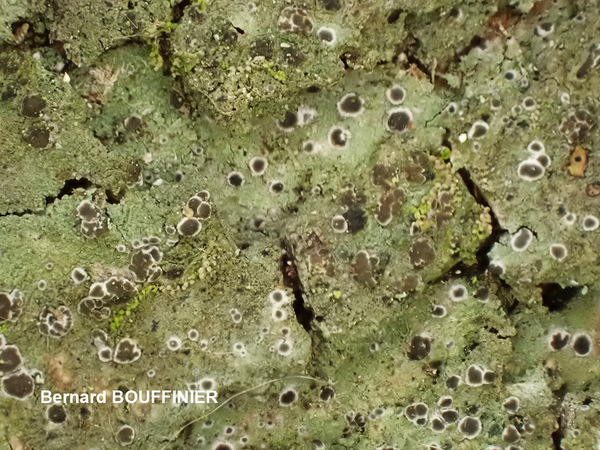
Bernard Bouffinier - Source: http://www.lichensmaritimes.org/index.php?task=fiche&lichen=1330&lang=en
France, Crozon
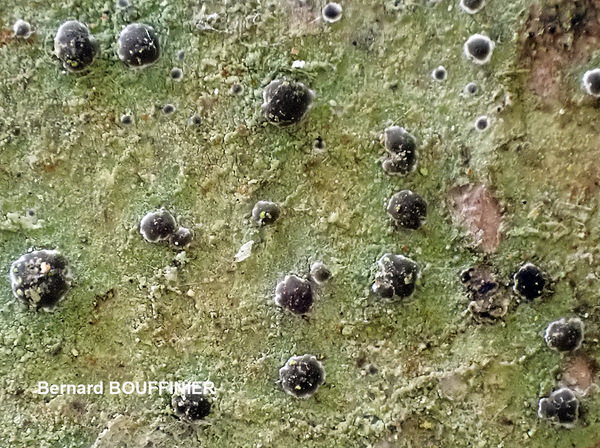
Bernard Bouffinier - Source: http://www.lichensmaritimes.org/index.php?task=fiche&lichen=1330&lang=en
France, Crozon
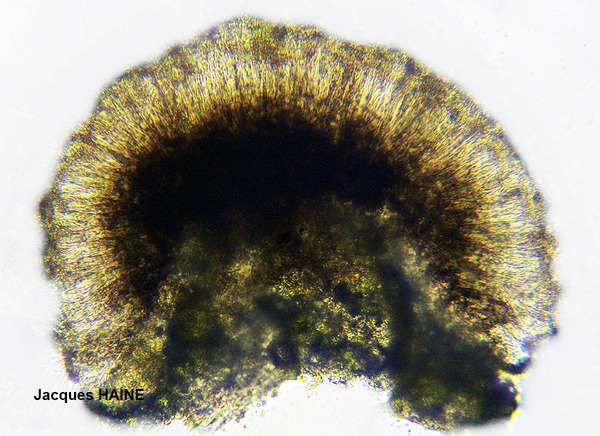
Jacques Haine - Source: http://www.lichensmaritimes.org/index.php?task=fiche&lichen=1330&lang=en
France, Crozon

Jacques Haine - Source: http://www.lichensmaritimes.org/index.php?task=fiche&lichen=1330&lang=en
France, Crozon
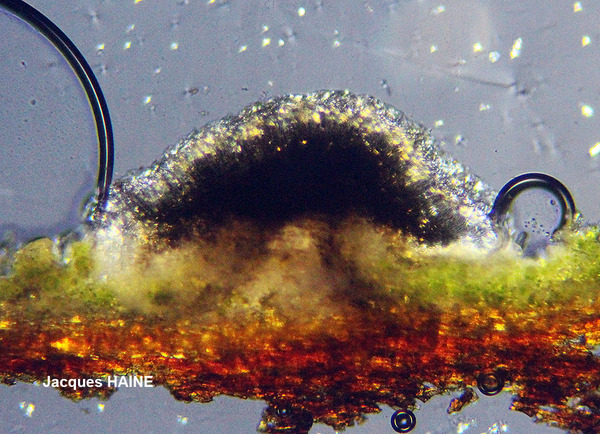
Jacques Haine - Source: http://www.lichensmaritimes.org/index.php?task=fiche&lichen=1330&lang=en
France, Crozon
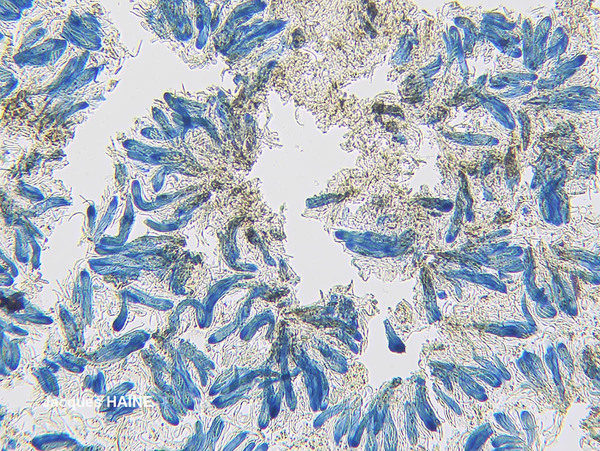
Jacques Haine - Source: http://www.lichensmaritimes.org/index.php?task=fiche&lichen=1330&lang=en
France, Crozon

Jacques Haine - Source: http://www.lichensmaritimes.org/index.php?task=fiche&lichen=1330&lang=en
France, Crozon
Growth form: Crustose
Substrata: bark and leaves
Photobiont: green algae other than Trentepohlia
Reproductive strategy: mainly sexual
Most common in areas with a humid-warm climate (e.g. most of Tyrrenian Italy)

Predictive model

Jacques Haine - Source: http://www.lichensmaritimes.org/index.php?task=fiche&lichen=1330&lang=en
France, Crozon

Bernard Bouffinier - Source: http://www.lichensmaritimes.org/index.php?task=fiche&lichen=1330&lang=en
France, Crozon

Bernard Bouffinier - Source: http://www.lichensmaritimes.org/index.php?task=fiche&lichen=1330&lang=en
France, Crozon

Bernard Bouffinier - Source: http://www.lichensmaritimes.org/index.php?task=fiche&lichen=1330&lang=en
France, Crozon

Bernard Bouffinier - Source: http://www.lichensmaritimes.org/index.php?task=fiche&lichen=1330&lang=en
France, Crozon

Bernard Bouffinier - Source: http://www.lichensmaritimes.org/index.php?task=fiche&lichen=1330&lang=en
France, Crozon

Jacques Haine - Source: http://www.lichensmaritimes.org/index.php?task=fiche&lichen=1330&lang=en
France, Crozon

Jacques Haine - Source: http://www.lichensmaritimes.org/index.php?task=fiche&lichen=1330&lang=en
France, Crozon

Jacques Haine - Source: http://www.lichensmaritimes.org/index.php?task=fiche&lichen=1330&lang=en
France, Crozon

Jacques Haine - Source: http://www.lichensmaritimes.org/index.php?task=fiche&lichen=1330&lang=en
France, Crozon


